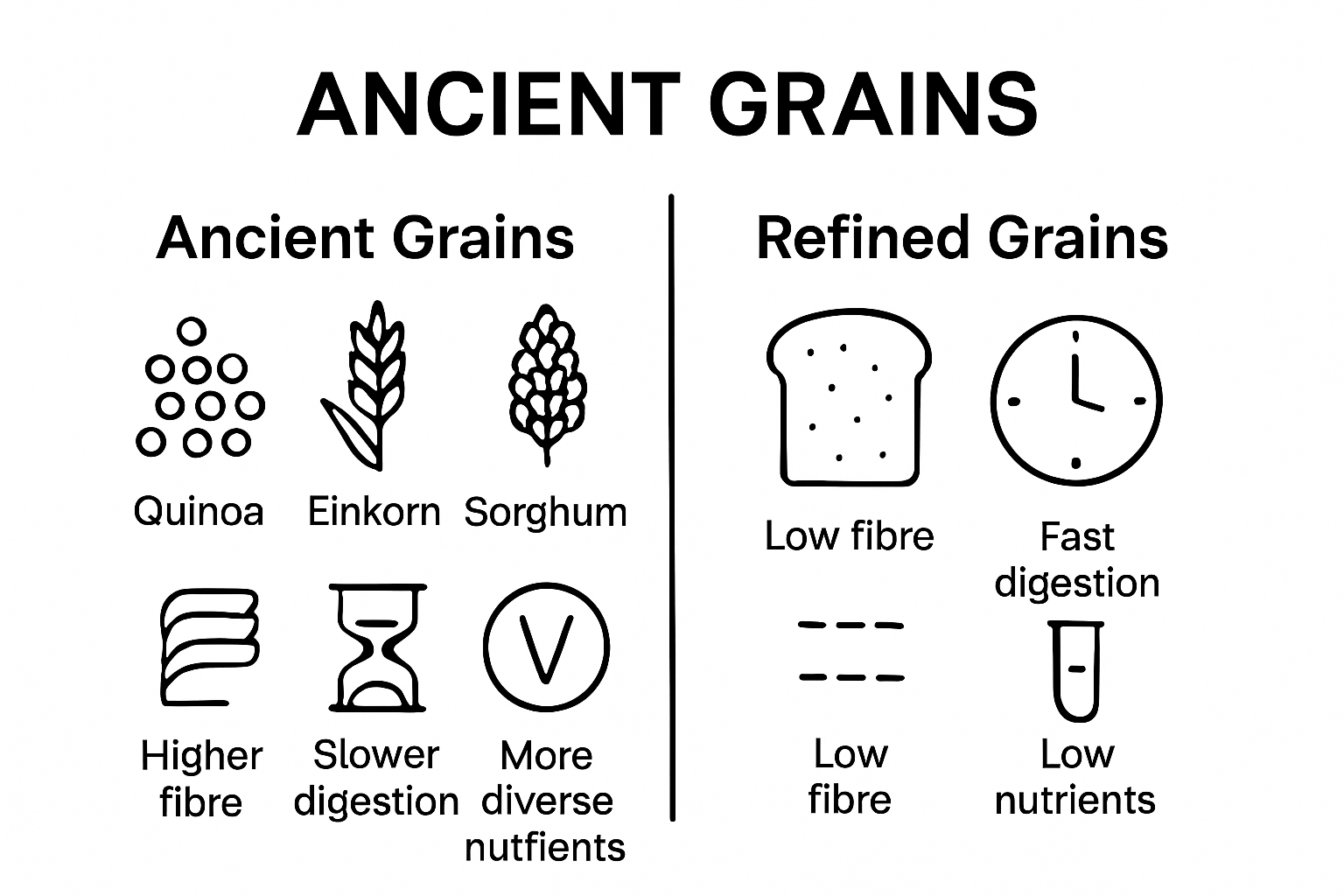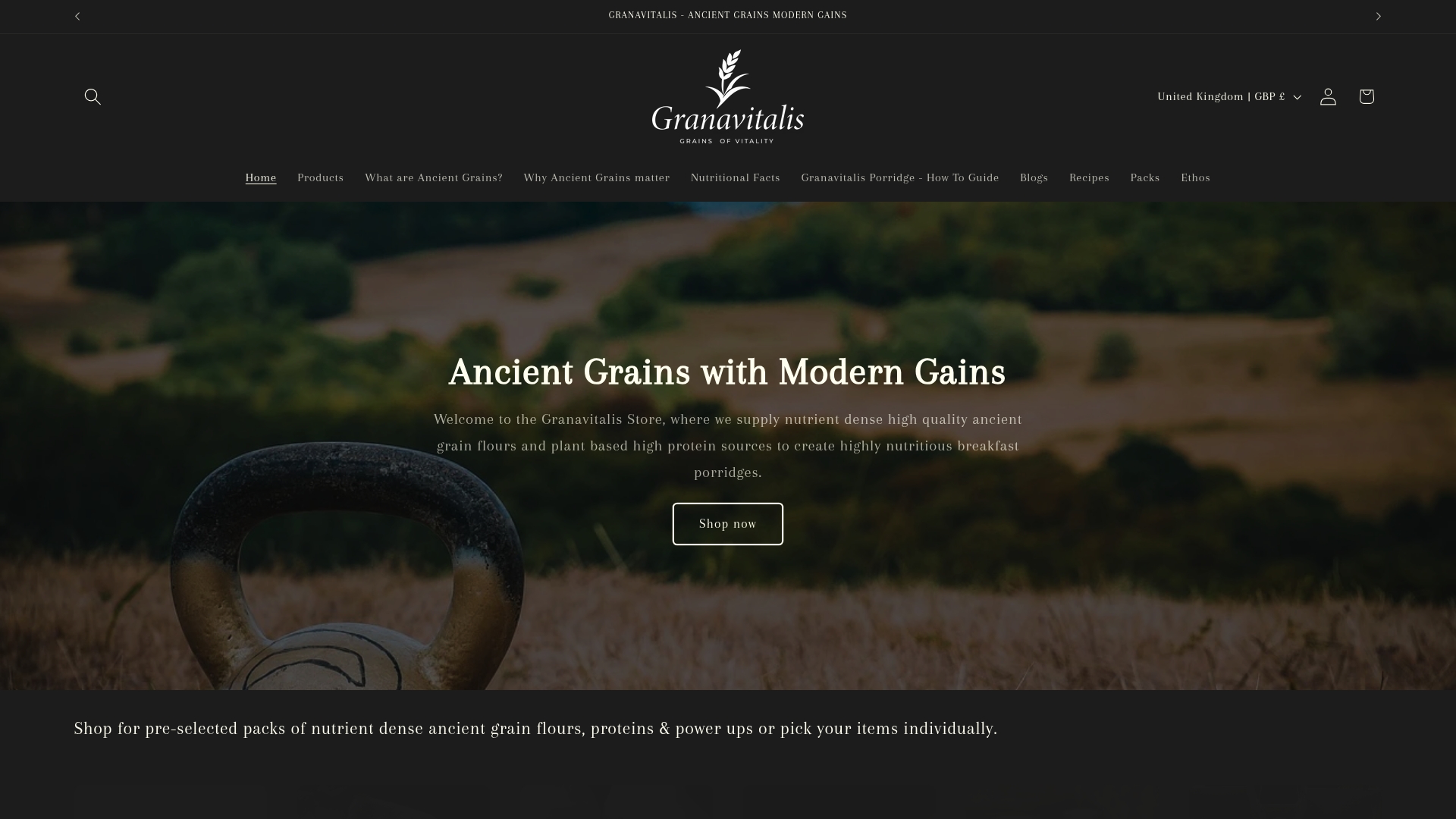
Understanding Ancient Grains and Gut Health
Share
Ancient grains have quietly anchored human diets for thousands of years, offering a nutritional punch that modern grains often lack. You might think wholegrain bread at the supermarket is giving you all the goodness your body needs. But the truth is many ancient grains contain up to 18 percent protein and 13 percent fibre, far outstripping their modern cousins in nutritional value. These unassuming seeds have more to offer your gut and wellbeing than most people expect.
Table of Contents
- What Are Ancient Grains And Why Are They Important?
- The Link Between Ancient Grains And Gut Health
- How Ancient Grains Benefit Digestive Health
- Key Nutritional Components Of Ancient Grains
- Incorporating Ancient Grains Into A Healthy Diet
Quick Summary
| Takeaway | Explanation |
|---|---|
| Ancient grains are nutritious powerhouses. | These grains like quinoa and amaranth are rich in proteins, fibres, and essential micronutrients that support health. |
| They can improve digestive health. | Ancient grains promote gut health by nourishing beneficial bacteria and improving digestive functions with their high fibre content. |
| They help manage blood sugar levels. | The complex carbohydrates in ancient grains are digested slowly, leading to stable blood sugar and sustained energy. |
| Incorporate them into meals creatively. | Replace refined grains with ancient grains in recipes or create innovative dishes like salads and grain bowls for variety. |
| Start with small quantities for balance. | Gradually introduce ancient grains into your diet while balancing them with other food groups to ensure digestive comfort. |
What are Ancient Grains and Why Are They Important?
Ancient grains represent a remarkable category of nutritional powerhouses that have sustained human populations for thousands of years. Unlike modern, industrially processed grains, these time-honoured crops have maintained their original genetic structure and nutritional integrity. Discover the fascinating world of ancient grains and understand why they are increasingly recognised as superior dietary options.
The Unique Origins of Ancient Grains
Ancient grains are essentially cereal crops that have remained largely unchanged by modern agricultural practices. These include varieties such as quinoa, amaranth, millet, sorghum, and heritage wheat types like einkorn and spelt. Unlike contemporary wheat cultivars that have undergone extensive selective breeding, these grains have preserved their original genetic composition.
According to research published in PubMed, ancient grains are distinguished by their remarkable nutritional profile. They are exceptionally rich in:
- High-quality proteins
- Complex dietary fibers
- Essential micronutrients
- Bioactive compounds with significant health benefits
Nutritional and Health Advantages
The compelling appeal of ancient grains extends far beyond their historical significance. These nutritional treasures offer a range of health benefits that set them apart from conventional grains. They are naturally packed with antioxidants, possess anti-inflammatory properties, and demonstrate potential in managing chronic health conditions.
Researchers have identified that ancient grains can contribute to:
- Improved metabolic health
- Enhanced digestive function
- Reduced inflammation
- Balanced blood sugar levels
- Support for cardiovascular wellness
Their complex carbohydrate structures and high fiber content mean they are digested more slowly, providing sustained energy and promoting gut health.
Below is a comparison of the nutritional composition of ancient grains versus modern grains, summarising key macronutrient differences discussed in the article.
| Nutritional Component | Ancient Grains | Modern Grains |
|---|---|---|
| Protein Content | 12-18% | 7-12% |
| Dietary Fibre | 10-13% | 2-7% |
| Complex Carbohydrates | 53-72% | 62-78% |
| Lipid (Fat) Content | 2-3% | 1-2% |
| Retained Genetic Diversity | High | Low |
| Level of Processing | Minimal (unchanged) | Extensive (refined) |
This makes them an excellent dietary choice for individuals seeking balanced, nutrient-dense nutrition.
The Link Between Ancient Grains and Gut Health
The relationship between ancient grains and gut health represents a fascinating intersection of nutrition, microbiology, and holistic wellness. Explore our natural partnership for gut health and discover how these remarkable foods can transform digestive wellbeing.
Microbiome Nourishment
Ancient grains provide exceptional support for the gut microbiome through their unique nutritional composition. According to research published in the International Journal of Molecular Sciences, these grains contain complex carbohydrates and prebiotic fibers that serve as essential nutrition for beneficial gut bacteria.
Key microbiome benefits include:
- Stimulating growth of beneficial bacterial strains
- Promoting diverse microbial populations
- Supporting short-chain fatty acid production
- Enhancing intestinal barrier function
Digestive System Support
The intricate fiber structures in ancient grains play a crucial role in maintaining digestive health. Their complex carbohydrates are digested more slowly compared to refined grains, which helps stabilise blood sugar levels and provides sustained energy. This gradual digestion process reduces inflammation and supports a balanced gut environment.
The high fiber content in ancient grains contributes to:

- Improved digestive regularity
- Enhanced nutrient absorption
- Reduced risk of gastrointestinal disorders
- Balanced inflammatory responses
By introducing ancient grains into your diet, you are not merely consuming food but actively nurturing your body’s internal ecosystem.
The following table highlights the key mechanisms by which ancient grains benefit gut health, derived from research findings presented in the article.
| Gut Health Benefit | Mechanism in Ancient Grains |
|---|---|
| Supports beneficial bacteria growth | Provides prebiotic fibres and complex carbohydrates |
| Enhances microbial diversity | Encourages diverse populations of gut microbiota |
| Promotes SCFA production | Supplies fermentable fibres for short-chain fatty acids |
| Improves intestinal barrier | Delivers nutrients that strengthen gut barrier integrity |
| Reduces digestive inflammation | Slower digestion and balanced carbohydrate release |
| Enhances nutrient absorption | Improves digestive regularity and absorption efficiency |
How Ancient Grains Benefit Digestive Health
Digestive health represents a complex ecosystem where nutrition plays a pivotal role, and ancient grains emerge as powerful allies in maintaining optimal gut function. Learn more about why ancient grains matter in supporting comprehensive digestive wellness.
Prebiotic Power of Ancient Grains
Ancient grains distinguish themselves through extraordinary prebiotic capabilities that nourish beneficial gut bacteria. According to research from the Rowett Institute, these nutritional powerhouses contain specialized fiber structures that serve as direct food sources for probiotic microorganisms.
Key prebiotic mechanisms include:
- Stimulating growth of beneficial bacterial colonies
- Supporting microbial diversity
- Enhancing production of short-chain fatty acids
- Reinforcing intestinal barrier integrity
Complex Carbohydrate Digestion
Unlike refined grains, ancient grains feature intricate carbohydrate compositions that promote slower, more balanced digestion. Their complex molecular structures mean gradual nutrient release, which helps stabilise blood sugar levels and provides sustained energy. This measured digestion process minimises inflammatory responses and supports a balanced gut environment.
Beneficial digestive outcomes encompass:

- Improved metabolic efficiency
- Reduced digestive inflammation
- Enhanced nutrient absorption
- Balanced blood glucose responses
By integrating ancient grains into dietary patterns, individuals can proactively support their digestive system’s health, transforming nutrition from mere sustenance to a strategic approach for holistic wellness.
Key Nutritional Components of Ancient Grains
Ancient grains represent a nutritional treasure trove, offering a complex array of essential nutrients that far surpass conventional modern grains. Learn more about the remarkable nutritional profile of ancient grains and understand how these remarkable foods can transform your dietary landscape.
Macronutrient Composition
According to research published in Cereals and Grains Association, ancient grains demonstrate a sophisticated macronutrient profile that distinguishes them from contemporary grain varieties. These nutritional powerhouses typically contain:
- Higher protein content (ranging from 12-18%)
- Complex carbohydrate structures (53-72%)
- Substantial dietary fiber (10-13%)
- Lower lipid content (2-3%)
Micronutrient and Bioactive Compounds
Beyond basic macronutrients, ancient grains are distinguished by their rich micronutrient composition. They are abundant in essential vitamins and minerals, including:
- B vitamins (niacin, riboflavin, thiamin)
- Pantothenic acid
- Essential minerals like iron, zinc, and calcium
- Bioactive compounds such as phenolic acids and flavonoids
These micronutrients contribute to their remarkable health-promoting properties, including antioxidant, anti-inflammatory, and metabolic regulatory functions. The unique genetic composition of ancient grains allows them to retain a more diverse and concentrated nutritional profile compared to modern, extensively bred grain varieties.
Incorporating Ancient Grains into a Healthy Diet
Transforming dietary habits to include ancient grains represents a strategic approach to enhancing nutritional intake and supporting overall wellness. Discover the unique properties of ancient einkorn as a gateway to understanding these remarkable nutritional powerhouses.
Strategic Meal Integration
According to research from the Harvard T.H. Chan School of Public Health, incorporating ancient grains requires thoughtful and creative dietary planning. These nutritional gems can be seamlessly integrated into various meals through simple yet effective strategies:
- Replacing refined grains in traditional recipes
- Creating diverse breakfast porridges
- Developing innovative salad and grain bowl combinations
- Exploring alternative baking and cooking techniques
Balanced Consumption Approach
Successful integration of ancient grains demands a nuanced understanding of portion control and dietary diversity. While these grains offer exceptional nutritional benefits, moderation and variety remain crucial. Nutritionists recommend gradual introduction, starting with small quantities and progressively increasing consumption.
Effective incorporation strategies include:
- Mixing ancient grains with familiar grain varieties
- Experimenting with different grain textures and cooking methods
- Balancing grain intake with other protein and vegetable sources
- Monitoring individual digestive responses
By approaching ancient grains as a dynamic component of a holistic diet, individuals can unlock their remarkable potential for supporting gut health, metabolic function, and overall nutritional wellbeing.
Experience the Transformative Power of Ancient Grains for Gut Health
Struggling to find foods that truly nourish your gut and support lasting digestive wellness? As highlighted in “Understanding Ancient Grains and Gut Health,” many modern choices fail to address problems such as lack of fibre, essential nutrients, and prebiotic benefits. Ancient grains hold the solution. At Granavitalis, we make it easy to reclaim your well-being with a curated range of ancestral flours that genuinely feed your microbiome and help you feel your best every day. Discover the difference in our All Flours collection, where you can find grains loved for centuries and now prepared for your modern kitchen.

Take the first step towards healthier digestion and natural vitality. Explore Gluten Free Flours for sensitive diets or visit Granavitalis to begin your journey to better mornings. Choose nourishment over compromise and unlock the natural balance your body deserves – start today and feel the benefits with your very next meal.
Frequently Asked Questions
What are ancient grains?
Ancient grains are cereal crops that have remained largely unchanged over time, preserving their original genetic structure and nutritional integrity. Examples include quinoa, amaranth, millet, and heritage wheat types like einkorn and spelt.
How do ancient grains benefit gut health?
Ancient grains are rich in complex carbohydrates and prebiotic fibres that nourish beneficial gut bacteria, promoting microbial diversity, enhancing short-chain fatty acid production, and supporting intestinal barrier function.
Can ancient grains help manage blood sugar levels?
Yes, the complex carbohydrate structures and high fibre content in ancient grains are digested slowly, which helps stabilise blood sugar levels, offering sustained energy and potentially reducing the risk of spikes in blood sugar.
How can I incorporate ancient grains into my diet?
You can integrate ancient grains into your diet by replacing refined grains in recipes, creating breakfast porridges, making salads and grain bowls, or experimenting with different cooking techniques and grain combinations.
